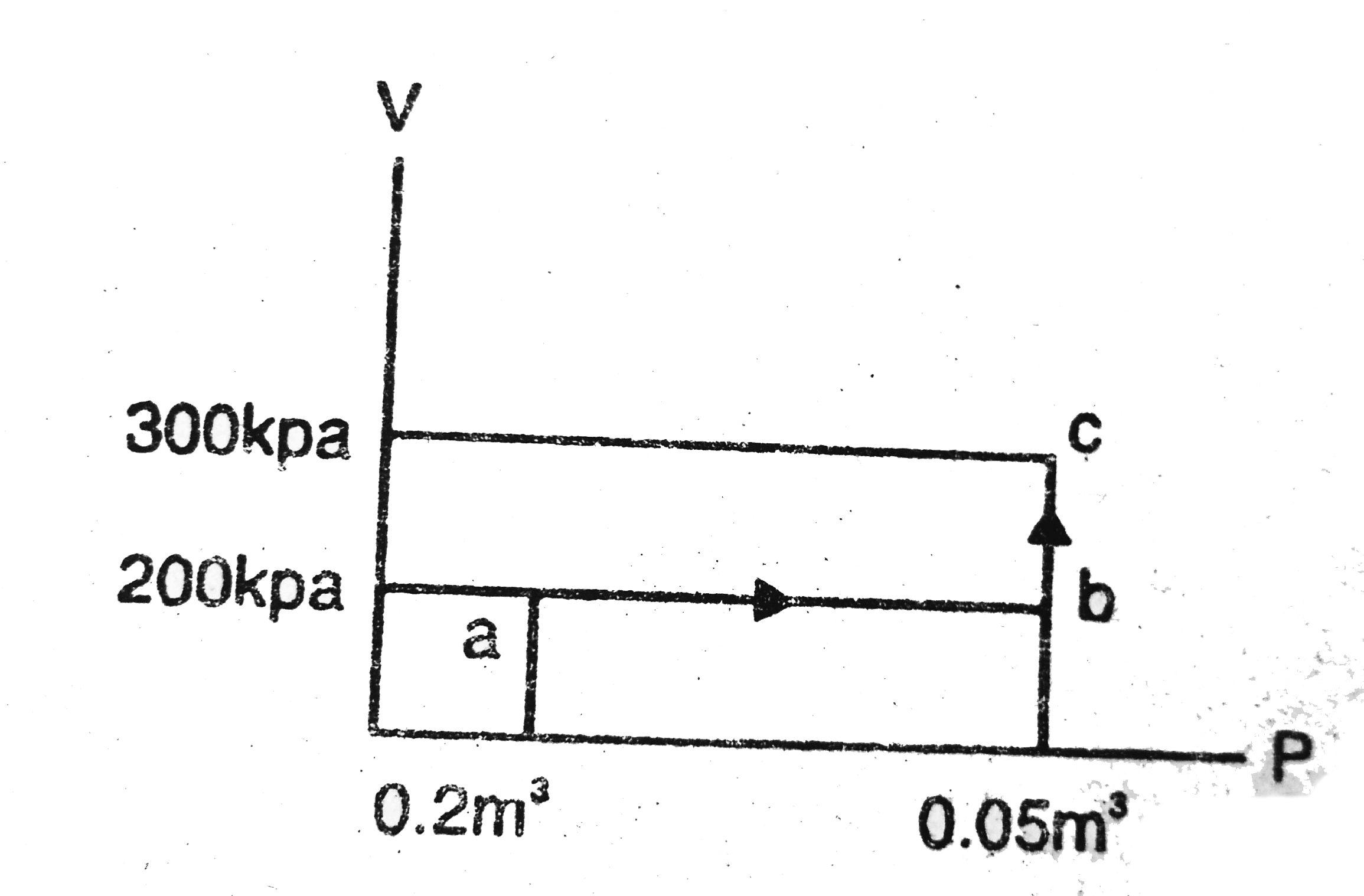A substance is taken through the process abc as shown in, if the internal energy of the substance increase by 5000 J and a heat of 2625 cal is given to the system, calculate the value of J.

The correct Answer is:A, C, D
Now, ΔQ=2625cal.
ΔU=5000J<br>Formgraph,
ΔW=200×103×0.03
=6000J
NowΔQ=ΔW+ΔU
⇒2625cal=6000+5000J
rArr J = (11000)/(2625) = 4.19J/cal.

Topper's Solved these Questions
- LAWS OF THERMODYNAMICSBOOK - HC VERMACHAPTER - LAWS OF THERMODYNAMICSEXERCISE - Short Answer
15 Videos
- LAWS OF THERMODYNAMICSBOOK - HC VERMACHAPTER - LAWS OF THERMODYNAMICSEXERCISE - Objective 2
5 Videos
- KINETIC THEORY OF GASESBOOK - HC VERMACHAPTER - KINETIC THEORY OF GASESEXERCISE - Exercises
62 Videos
- NEWTON'S LAWS OF MOTIONBOOK - HC VERMACHAPTER - NEWTON'S LAWS OF MOTIONEXERCISE - Exercises
42 Videos
Similar Questions
An ideal gas is taken through the process ABC as shown in figure. If the internal energy of the substance decreases by 10000J and a heat of 7159 cal is released by the system, calculate the value of meachanical equivalent of heat (J).

View SolutionA gas is taken through a cyclic process ABCA as shown in, if 2.4 cal of heat is given in the process, what is the value of J ?

View Solution
Knowledge Check
When work done by a system was 10J, the increase in the internal energy of the system was 30J. The heat 'q' supplied to the system was:
A−40JB+20JC40JD−20J
A sample of an ideal gas is taken through the cyclic process abca and shown in the figure. The chagne in the internal energy of the gas along the path ca is −180J. The gas aborbs 250J of heat along the path ab and 60 J along the path bc. the work done by the along the path abc is:A120JB130JC100JD140J
A: The internal energy of a solid substance increases during melting.
R: Latent heat is required to melt a solid substance.
View SolutionCalculate the work done by the system, when 40J heat is supplied to it, the internal energy of system increase 32J.
View SolutionA system gives out 30 J of heat and does 75 J of work. What is the internal energy change?
View Solutionwhen a system is taken through the process abc shown in 80 J of heat is absorbed by the system and 30 J of work is done by it. If the system does 10 J work during the process adc, how much heat flows into it during the process ?

View Solution
When a system is taken through the process abc shown in figure, 80 J of heat is absorbed by the system and 30 J of work is done by it. If the system does 10 J
of work during the process adc, how much heat flows into it during process?
View SolutionThe P - V diagram of a system undergoing thermodynamic changes is as shown in the figure. The work done by the system in going from A→B→C is 30 J. If 68 J of heat is given to the system, then the change in the internal energy of the system between A and C is

View Solution
